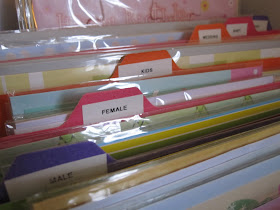A greeting card is a quicky, easy and inexpensive way to let someone special know that you are thinking of them.
I have always loved writing cards and letters to people... I remember writing letters to my cousins when we were growing up - there was nothing more exciting than the thrill of the postman delivering a reply! And when my dear Granny passed away, we came across a big box of letters that I sent to her over the years. And in high school, my girlfriends and I would write letters, pages long, every night to each other.
Since email and texting have come along, it has changed the way that people communicate. Yes, I do rely on email and texts to send messages to loved ones, but I still have big place in my heart for the good old fashioned card or letter posted in the mail!
I try to post birthday cards to my friends and family for their special day, and letters of thanks and well-wishes when I deem it timely. Monday night is my 'Cards and Presents' planning night, so it is on this day each week that I check the calendar and write any cards that I need to post in the coming week. I also look back on the week just passed, and write any thank-you cards to friends who hosted an event that I attended. I also check my phone for recent messages, and send cards to people who might need some cheering up because they are unwell or have had some bad news.
Keeping up with cards requires an element of organisation. Without cards and stamps on hand, the thought of sending someone a card won't actually eventuate and I do admit to missing special occasions altogether because I just wasn't prepared.
So here is how I stay on top of it... I buy greeting cards in bulk. When there is a book stand in the middle of the shopping centres, they often have boxes of hand-made greeting cards to buy. When you can pick up a box of 30 beautifully embelished cards for $25 - you are onto a good thing! It costs less than $1 a card, and the person on the receiving end will value it as priceless :)
The boxes usually come with a variety of cards for events such as birthdays, anniversaries, babies, get well, etc. The boxes are usually really sturdy and with a bit of scrapbooking paper, you can re-purpose it into a box for something else in your home! I also buy boxes of blank cards from stationery shops too. You should try checking out the throw-out table at the newsagency next time you are there!
I keep all of my greeting cards in this box (gotta love Ikea!).
I have divided the box using A4 divider tabs, which I cut to size for this box, so that my cards are organised and easy to access.
I have a tab for each month, so that I can plan ahead of time.
And tabs for different events such as birthdays, weddings, babies, etc.
Usually 2 weeks before the end of the month, I take my calendar (which you can read more about here) and my card box and put aside any cards that I will need for the upcoming month's birthdays, anniversaries, parties, etc. If I don't have the right card for an occasion, I write it on my shopping list and I have at least 2 weeks to find it.
I always make sure that I have plenty of postage stamps and address labels in my Postage Box, so that I can address and stamp it immediately, and all I need to do is pop it in the post box.
I also have these 2 great books, which help with card-writing. I like to take time to write something thoughtful in cards, and books like this provide ideas and inspiration which you can personalise to the event you are celebrating. A heartfelt message speaks volumes :)
Hopefully that gives you some ideas on how to organise your greeting cards. I think I am pretty good at sending birthday and thank-you cards, but next year my goal is going to be anniversaries! I have a really big extended family on my Mum's side - so next year I want to make sure that I get birthday cards out to all of my cousins' kids too... At last count there was 30+!!








No comments:
Post a Comment